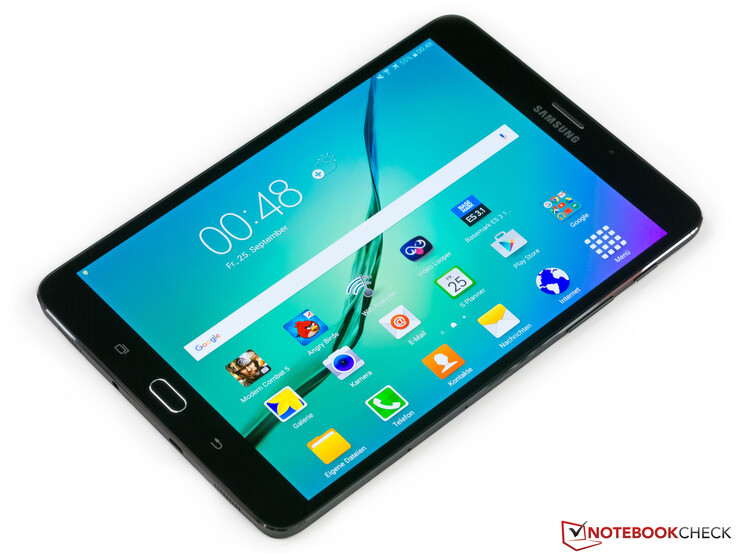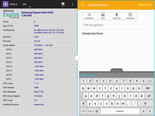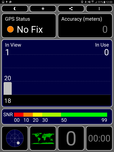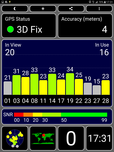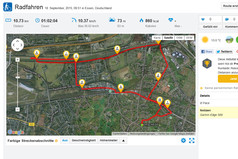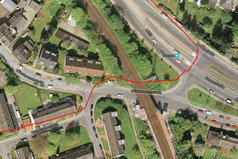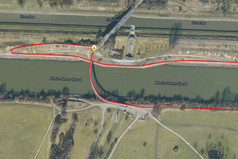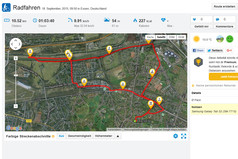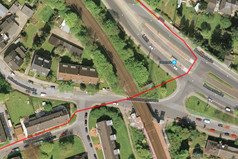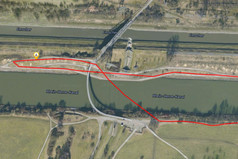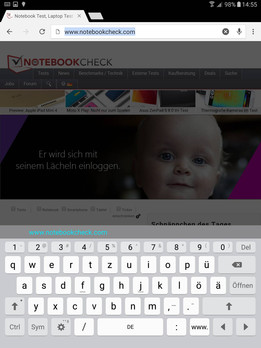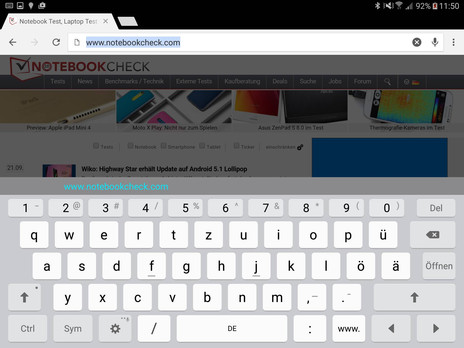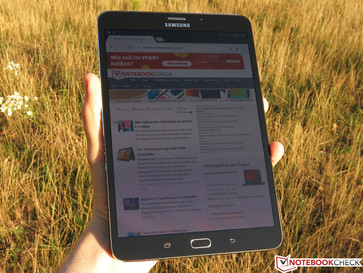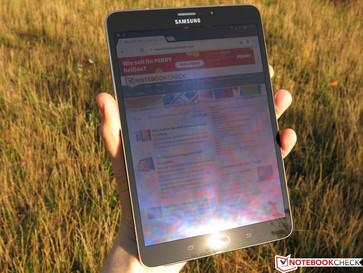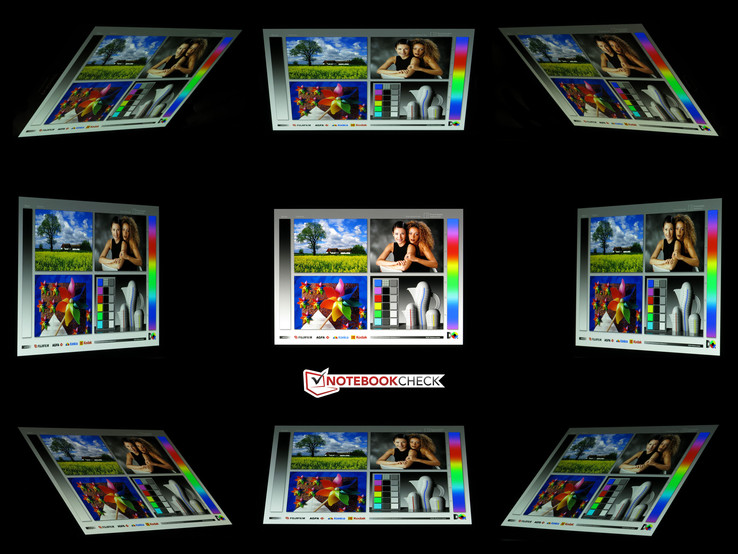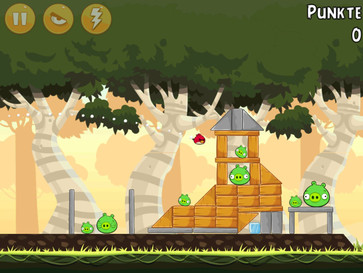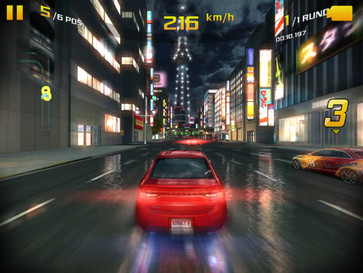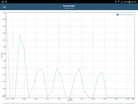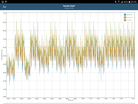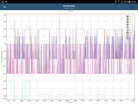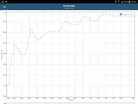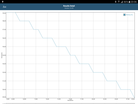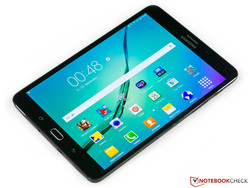Samsung Galaxy Tab S2 8.0 LTE Tablet Review
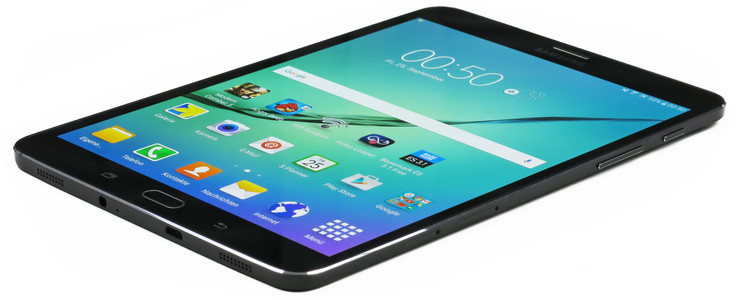
For the original German review, see here.
Samsung launches the Galaxy Tab S2 8.0 simultaneously with the iPad Air 2 rival Galaxy Tab S2 9.7. Because of its size, it is aiming to compete with the iPad Mini 4. The design is similar to the smartphones from the Galaxy A series. The most noticeable change compared to the predecessor, Galaxy Tab S 8.4, is the new Super-AMOLED display with a 4:3 screen ratio, which replaces the previous 16:10 display. Inside you still get 3 GB of memory as well as Samsung’s own Exynos SoC running at 1.9 GHz, but this chip belongs to a new CPU generation. While the tablet is also offered as a Wi-Fi-only version in some countries, Samsung only offers the LTE version for around 460 Euros (~$522) in Germany (RRP: 499 Euros/~$567).
As already mentioned, direct rivals for the Galaxy Tab S2 8.0 are Apple’s brand-new iPad Mini 4 as well as the Android devices Sony Xperia Z3 Tablet Compact and the slightly larger Google Nexus 9. A suitable Windows-based competitor is the inexpensive Lenovo Yoga 2 8, which is already available for 220 Euros (~$250) without LTE.
Case
Apart from the different dimensions, the two models from the Galaxy Tab S2 series are identical. The only difference is the earpiece that is situated above the Samsung logo at the front in the larger sibling. While the Galaxy Tab S2 8.0 is much slimmer and shorter compared to the old Galaxy Tab S 8.4, it is around one centimeter (~0.4 in) wider. The reason is the switch to a 4:3 screen ratio. Samsung advertises a height of just 5.6 millimeters (~0.22 in), which we can confirm for the upper part of the review unit. However, we measured up to 5.9 mm (~0.23 in) at other spots, which is still a great value, but does not quite match the specifications. Nevertheless, this should not be a big deal in practice. It is not great for the design that the camera protrudes by around 1.8 millimeters (~0.7 in) from the back. Overall, the dimensions are very similar to the Apple iPad Mini 4. The lower weight of just 272 grams (~9.59 oz) of our review unit is only beaten by the Sony Xperia Z3 Tablet Compact (271 grams/~9.56 oz) within the comparison group.
While the design of the Galaxy Tab S 8.4 is reminiscent of the top smartphone Galaxy S5 , the new tablet follows the design philosophy of the Galaxy A smartphone series: The use of a metal frame is a new feature that gives a more polished edge surrounding the device. Unfortunately, it feels a little sharp to the touch, so the focus was probably the sophisticated design. The back of the device is still made of plastic, which provides a good grip. However, it is prone to collect fingerprints that are tricky to remove. At the rear are also the two attachment points for the optional Book Cover.
Thanks to the metal frame, the Galaxy Tab S2 8.0 leaves a very sturdy impression, even though the chassis shows some degree of flexibility. The sophisticated impression is supported by the small gaps and there is just a slight creaking noise when you try to twist it.
Connectivity
In terms of connectivity, there are no differences between the Galaxy Tab S2 8.0 and the larger Galaxy Tab S2 9.7. The smaller version also uses a 1.9 GHz Exynos 5433 Octa SoC that is supported by 3 GB of RAM. The flash storage is also identical at 32 GB, which is twice the size of the older Galaxy Tab S model. You can use around 25.2 GB for your files and apps ex-works, but you can expand the storage with microSD-cards and a capacity of up to 128 GB. A positive aspect is that the tablet supports the transfer of apps to the microSD-card provided the app does support it.
Samsung still uses a Micro-USB 2.0 port for connection with the power adaptor or external devices – it is a pity that you do not get a faster USB 3.0 port with the comfortable USB Type-C jack. The port still supports some useful additional features: Besides USB-OTG for the attachment of external peripherals, you can also use the MHL interface to transfer the display content. Wireless communication methods include Bluetooth 4.1, Wi-Fi-Direct as well as ANT+. Furthermore, it is easy to stream contents to corresponding devices within the home network. Unlike its predecessor, the Galaxy Tab S2 8.0 does not have an infrared transmitter, and once again, NFC is not included.
On a positive note, the tablet is equipped with a vibration motor for tactile feedback, but you do not get a notification LED, which is usually available on Android smartphones.
Software
Samsung uses the Android 5.0.2 operating system in combination with its own user interface TouchWiz. The software is very easy to use in its latest iteration and offers many additional features and settings. Unfortunately, it is not yet clear if there will be an update to Android 5.1 or 6.0.
As usual for Samsung, there are some preloaded third-party apps, but they can be removed if necessary. However, this is not the case for the preloaded Microsoft Office components (Word, Excel, PowerPoint, OneNote, Skype, and OneDrive). They can be deactivated, but not removed entirely. A news feed (Flipboard Briefing) is shown by default on the left side of the home screen, but it can be deactivated if not required.
You also get some useful Samsung apps that can convince with their additional features. The Smart Switch app, for instance, improves the switch from an existing smartphones, since you can transfer settings, contacts and files depending on the source. The SideSync app is particularly interesting as it allows the remote control of the tablet via Windows PC or another mobile device. However, we did not manage to establish a connection with another Samsung tablet during the review, but it was easy to do so via a notebook after we had installed the Samsung software. The split-screen mode of the Galaxy S2 8.0 is also useful, and it can be activated with a long push on the left touch button.
Communication & GPS
The integrated Wi-Fi module (a/b/g/n/ac) allows very high theoretical transfer rates: In combination with an Asus RT-AC56U, the tablet managed up to 780 Mbps (theoretical maximum 866 Mbps) in a 5 GHz network, which is reduced when the distance was increased. We can also confirm a good performance in terms of the signal quality: The results were similar to comparable devices in 2.4 as well as 5 GHz bands.
Internet connections without a Wi-Fi network are possible via LTE modem, which supports transfer rates of up to 300 Mbps (LTE Cat. 6). All the usual 3G and 4G bands in Germany are supported. It is also possible to use a Booster feature to combine the Wi-Fi and WWAN for larger downloads. Not only does the tablet support mobile data transfers, it can also be used for calls. Thanks to the integrated earpiece, you can just use the tablet like a smartphone – the larger Galaxy Tab S2 9.7 does not offer this advantage. You cannot differentiate the voice quality of the review unit from a high-quality smartphone when you make calls, and both sides confirmed a good voice quality and understandability. The signal quality was always perfect in the metropolitan T-Mobile network.
The tablet uses GLONASS as well as GPS to locate the position. The sat fix was quickly established outdoors, but the signal quality was always slightly weaker compared to the larger sibling Galaxy Tab S2 9.7. We could not get a signal on the third floor of a four-storey apartment building. We checked the accuracy on a bicycle ride and compared the result with the navigation device Garmin Edge 500. The overall deviation was just 2%, but you can see that the tablet sometimes took the direct way or shortcuts, which suggests a longer gap between the satellite contacts. The Galaxy Tab S2 9.7 was slightly more accurate. The champion in this discipline is the Apple iPad Mini 4, which could even beat our special navigation device.
Cameras & Multimedia
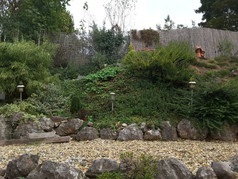
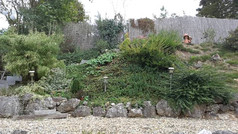
Samsung uses identical camera equipment for both Tab S2 models. At the front is a selfie camera with a pretty meager resolution of just 2.1 MP (1920x1080 pixels, 16:9, aperture f/2.2) that takes rather blurry and pale pictures. The optional soft-focus is therefore not really necessary.
The 8 MP sensor at the rear (3264x2448 pixels, 4:3) takes much better pictures. It cannot compete with the image quality of current high-end smartphones, but there are not many tablets that perform better. It is unfortunate that the increased light sensitivity (f/1.9 instead of f/2.4) cannot compensate for the significantly decreasing picture quality in low-light conditions. You can quickly see picture noise and details become blurry. Unlike the predecessor, an LED flash that could brighten up the scene is no longer available. You can also notice a sharpness decrease when you look more closely. The camera is located close to the edge of the tablet, which means that you have to be careful with the position of your fingers when you take a picture in landscape mode.
If you prefer to select a manual white balance, fixed ISO values or exposure compensation, you should switch from the automatic mode to the professional mode. It provides the mentioned features as well as the live effect filters that are available in all shooting modes. Furthermore, you can take HDR images as well as panoramas.
The Galaxy Tab S2 8.0 supports some nice features for video recordings. It is possible to take clips at up to 2560x1440 pixels and 30 frames per second in the common 16:9 aspect ratio. This is an improvement over the old model, which only supported Full HD. However, you cannot take pictures when you use the highest resolution, and the electronic image stabilizer is not available, either. The high-contrast videos are impressive in both FHD as well as QHD. The pictures from the video even show more details and better colors compared to the front camera. The latter can also record videos in 1080p at 30 frames per second and the quality is sufficient for occasional video calls.
The quality of sound recordings was slightly better compared to the larger Galaxy Tab S2 9.7. The sound quality of the two microphones was a bit clearer in a direct comparison.
Accessories
As with the larger Galaxy Tab S2 9.7, Samsung provides only the essentials. The box contains a quick-start guide, a power adaptor plus charging cable (5 V, 2 A) as well as a small metal tool to open the card slots. For an additional charge of 59.90 Euros (~ $68), you can get the so-called Book Cover that is specifically designed for the Galaxy Tab S2 8.0.
Warranty
Samsung offers a 24-month warranty for its tablets, but it does not include the integrated battery (12 months) or the provided accessories (6 months).
Input Devices & Handling
Like the Galaxy Tab S2 9.7, the touchscreen of the Galaxy Tab S2 8.0 convinces with a high precision even with very light touches. The good gliding capabilities of the glass surface only create minimal friction for the fingers. While we praised the build quality of the buttons during the review of the larger sibling, both the volume rocker as well as the power button of our review unit leave a slightly wobbly impression. However, this does not affect the well-defined pressure points.
The fingerprint scanner is integrated into the home button and no longer works with swipes – it is now sufficient to put your finger on the button similar to the top smartphones Samsung Galaxy S6 and S6 Edge, respectively. The detection rate was very decent during our review, so it really improves the comfort compared to the input of a password or locking pattern. It is also possible to use it for purchases in Samsung’s own app store or for logins on websites.
The integrated Samsung keyboard supports all common features like word predictions and input via swipe gesture. German umlauts are directly accessible. It is possible to adjust the size of the keyboard based on your personal preferences. Other features are the adjustable position on the screen as well as the split-view for the improved input with the thumbs.
The system always reacts quickly to inputs. There were no annoying stutters, the animations were very smooth and even the switching between apps was not a problem. The same applied to the display rotation: the position sensor quickly adjusts the contents.
Display
The Galaxy Tab S2 8.0 is equipped with an 8-inch Super-AMOLED panel in a 4:3 screen ratio. The resolution is similar to that of the Galaxy Tab S2 9.7 at 2048x1536 pixels, which results in a pretty high pixel density of 320 PPI. The older model Galaxy Tab S 8.4 even reached 359 PPI. One clear disadvantage of the display technology – that we could already notice in the review of the larger sibling – is the occasional thin green and red color fringes. However, these are only noticeable at hard edges like the on-screen keyboard and on very close inspection.
The average luminance of 348 cd/m² in the manual mode of our review unit is much better than the 261 cd/m² of the predecessor. Devices with LCD panels like the iPad Mini 4 or the Sony Xperia Z3 Tablet Compact even manage more than 400 cd/m². However, the Samsung tablet can also reach a higher value when the light sensor is active to improve the visibility under direct sunlight. A brightness distribution of 88% is slightly below the average result of the competitors, but this is not an issue in practice.
| |||||||||||||||||||||||||
Brightness Distribution: 88 %
Center on Battery: 347 cd/m²
Contrast: ∞:1 (Black: 0 cd/m²)
ΔE ColorChecker Calman: 1.67 | ∀{0.5-29.43 Ø4.78}
ΔE Greyscale Calman: 1.75 | ∀{0.09-98 Ø5}
95.4% AdobeRGB 1998 (Argyll 1.6.3 3D)
Gamma: 2.27
CCT: 6361 K
| Samsung Galaxy Tab S2 8.0 LTE 2048x1536 px 8.0'' (Super AMOLED) | Samsung Galaxy Tab S 8.4 2560x1600 px 8.4'' (Super AMOLED) | Apple iPad Mini 4 2048x1536 px 7.9'' (Retina) | Sony Xperia Z3 Tablet Compact 1920x1200 px 8.0'' (Triluminos) | Google Nexus 9 2048x1536 px 8.9'' (IPS) | Lenovo Yoga Tablet 2 8 1920x1200 px 8.0'' (IPS) | Samsung Galaxy Tab S2 9.7 LTE 2048x1536 px 9.7'' (Super AMOLED) | |
|---|---|---|---|---|---|---|---|
| Screen | |||||||
| Brightness middle (cd/m²) | 347 | 258 -26% | 411 18% | 531 53% | 430 24% | 389 12% | 358 3% |
| Brightness (cd/m²) | 348 | 261 -25% | 421 21% | 518 49% | 411 18% | 371 7% | 357 3% |
| Brightness Distribution (%) | 88 | 91 3% | 91 3% | 91 3% | 92 5% | 88 0% | 86 -2% |
| Black Level * (cd/m²) | 0.58 | 0.66 | 0.77 | 0.25 | |||
| Colorchecker dE 2000 * | 1.67 | 3.66 -119% | 2.15 -29% | 6.29 -277% | 3.17 -90% | 10.28 -516% | 1.78 -7% |
| Greyscale dE 2000 * | 1.75 | 2.51 -43% | 2.72 -55% | 7.04 -302% | 3.29 -88% | 9.65 -451% | 1.38 21% |
| Gamma | 2.27 97% | 2.22 99% | 2.29 96% | 2.78 79% | 2.39 92% | 1.25 176% | 2.24 98% |
| CCT | 6361 102% | 6450 101% | 7012 93% | 8600 76% | 6746 96% | 6657 98% | 6366 102% |
| Color Space (Percent of AdobeRGB 1998) (%) | 95.4 | 100 5% | 73.75 -23% | 62 -35% | |||
| Contrast (:1) | 709 | 805 | 558 | 1556 |
* ... smaller is better
Because of the Super-AMOLED technology, the display does not need the background illumination from LCD displays. Therefore, since the black value is 0 cd/m², in theory the maximum contrast is infinite. The comparison devices cannot keep up with this, although a contrast of 1556:1 in the case of the Lenovo Yoga 2 8 is still an excellent result. The subjective picture impression of the Galaxy Tab S2 8.0 is also very vivid.
As with the Galaxy Tab S2 9.7 you can choose between various color presets (AMOLED Cinema, AMOLED Photo, Simple, Reading) that create very different picture impressions. The "adjustable display" option adjusts the color gamut, the saturation and the sharpness automatically, based on the content.
Therefore, it is not surprising that the measurements as well as the changes are very close to the larger sibling. While the "Simple" mode with a color temperature of 6361 K (ideal 6500 K) and normal color saturation focuses on a precise sRGB coverage, the AMOLED Photo mode uses the AdobeRGB color space, which creates richer colors. Both modes show very low color deviations from the corresponding ideal values. This changes when you use the other modes: While the AMOLED Cinema mode increases the color temperature to 7105 K, it is the opposite in the Reading mode, where we can determine 5919 K. Both presets sacrifice the color accuracy in favor of the desired impression.
We have already mentioned that the Galaxy Tab S2 8.0 can adjust its luminance to the outdoor requirements via additional brightness boost. Visibility is also ensured by the excellent contrast. You should only avoid direct sunlight, otherwise there can be reflections as well as purple-blue reflection patterns on the panel.
The review unit also shares the strengths and weaknesses of the larger sibling, Galaxy Tab S2 9.7, in terms of the viewing angle stability. The brightness decrease is very moderate and thanks to the AMOLED technology, color inversions are not an issue. However, once again we can see a color shift towards blue-green.
Performance
TThe technical specifications of the Galaxy Tab S2 8.0 are also similar to the 9.7-inch model. Inside the chassis is Samsung’s own Exynos 5433 Octa SoC. Unlike the Exynos 5420 Octa in the predecessor, the new chip now supports 64-bit and is based on the big.LITTLE principle. The powerful cluster consists of four Cortex-A57 cores running at up to 1.9 GHz, while the four more frugal Cortex-A53 cores (up to 1.3 GHz) are supposed to consume less power during simple tasks. All cores can be used simultaneously if necessary. A Mali-T760 MP6 GPU that is also integrated into the SoC. handles the graphics.
The determined performance is also similar to the larger sibling, which is not really surprising when you consider the identical specifications. Only the performance in the GFXBench Offscreen benchmarks is clearly worse on the 8-inch model. Overall, the review unit performs better within the comparison than the Galaxy Tab S2 9.7 did. Once again, we can see an excellent result in Smartbench 2012, while the Galaxy Tab S2 8.0 is usually average. On a positive note, the predecessor is beaten in all benchmarks except for Linpack, despite the identical clocks.
| AnTuTu v5 - Total Score (sort by value) | |
| Samsung Galaxy Tab S2 8.0 LTE | |
| Samsung Galaxy Tab S 8.4 | |
| Apple iPad Mini 4 | |
| Sony Xperia Z3 Tablet Compact | |
| Google Nexus 9 | |
| Samsung Galaxy Tab S2 9.7 LTE | |
| Geekbench 3 | |
| 64 Bit Multi-Core Score (sort by value) | |
| Samsung Galaxy Tab S2 8.0 LTE | |
| Apple iPad Mini 4 | |
| Google Nexus 9 | |
| Samsung Galaxy Tab S2 9.7 LTE | |
| 64 Bit Single-Core Score (sort by value) | |
| Samsung Galaxy Tab S2 8.0 LTE | |
| Apple iPad Mini 4 | |
| Google Nexus 9 | |
| Samsung Galaxy Tab S2 9.7 LTE | |
| PCMark for Android - Work performance score (sort by value) | |
| Samsung Galaxy Tab S2 8.0 LTE | |
| Sony Xperia Z3 Tablet Compact | |
| Google Nexus 9 | |
| Samsung Galaxy Tab S2 9.7 LTE | |
| 3DMark | |
| 1280x720 offscreen Ice Storm Unlimited Score (sort by value) | |
| Samsung Galaxy Tab S2 8.0 LTE | |
| Samsung Galaxy Tab S 8.4 | |
| Apple iPad Mini 4 | |
| Sony Xperia Z3 Tablet Compact | |
| Google Nexus 9 | |
| Samsung Galaxy Tab S2 9.7 LTE | |
| 1280x720 offscreen Ice Storm Unlimited Graphics Score (sort by value) | |
| Samsung Galaxy Tab S2 8.0 LTE | |
| Samsung Galaxy Tab S 8.4 | |
| Apple iPad Mini 4 | |
| Sony Xperia Z3 Tablet Compact | |
| Google Nexus 9 | |
| Samsung Galaxy Tab S2 9.7 LTE | |
| 1280x720 offscreen Ice Storm Unlimited Physics (sort by value) | |
| Samsung Galaxy Tab S2 8.0 LTE | |
| Samsung Galaxy Tab S 8.4 | |
| Apple iPad Mini 4 | |
| Sony Xperia Z3 Tablet Compact | |
| Google Nexus 9 | |
| Samsung Galaxy Tab S2 9.7 LTE | |
| GFXBench 3.0 | |
| 1920x1080 1080p Manhattan Offscreen (sort by value) | |
| Samsung Galaxy Tab S2 8.0 LTE | |
| Samsung Galaxy Tab S 8.4 | |
| Apple iPad Mini 4 | |
| Sony Xperia Z3 Tablet Compact | |
| Google Nexus 9 | |
| Samsung Galaxy Tab S2 9.7 LTE | |
| on screen Manhattan Onscreen OGL (sort by value) | |
| Samsung Galaxy Tab S2 8.0 LTE | |
| Samsung Galaxy Tab S 8.4 | |
| Apple iPad Mini 4 | |
| Sony Xperia Z3 Tablet Compact | |
| Google Nexus 9 | |
| Samsung Galaxy Tab S2 9.7 LTE | |
The situation is similar in the browser tests: The Galaxy Tab S2 8.0 can always beat the older Galaxy Tab S 8.4, but it cannot keep up with the best devices. At least it can beat the Sony Xperia Z3 Tablet Compact in most cases. However, the subjective performance is more than sufficient for smooth web browsing.
| Octane V2 - Total Score (sort by value) | |
| Samsung Galaxy Tab S2 8.0 LTE | |
| Samsung Galaxy Tab S 8.4 | |
| Apple iPad Mini 4 | |
| Sony Xperia Z3 Tablet Compact | |
| Google Nexus 9 | |
| Samsung Galaxy Tab S2 9.7 LTE | |
| Mozilla Kraken 1.1 - Total (sort by value) | |
| Samsung Galaxy Tab S2 8.0 LTE | |
| Samsung Galaxy Tab S 8.4 | |
| Apple iPad Mini 4 | |
| Sony Xperia Z3 Tablet Compact | |
| Google Nexus 9 | |
| Samsung Galaxy Tab S2 9.7 LTE | |
| WebXPRT 2015 - Overall (sort by value) | |
| Samsung Galaxy Tab S2 8.0 LTE | |
| Apple iPad Mini 4 | |
| Samsung Galaxy Tab S2 9.7 LTE | |
| Google V8 Ver. 7 - Google V8 Ver. 7 Score (sort by value) | |
| Samsung Galaxy Tab S2 8.0 LTE | |
| Samsung Galaxy Tab S 8.4 | |
| Apple iPad Mini 4 | |
| Sony Xperia Z3 Tablet Compact | |
| Google Nexus 9 | |
| Samsung Galaxy Tab S2 9.7 LTE | |
| JetStream 1.1 - Total Score (sort by value) | |
| Samsung Galaxy Tab S2 8.0 LTE | |
| Samsung Galaxy Tab S2 9.7 LTE | |
* ... smaller is better
The performance of the 32 GB flash storage can beat the results of the predecessor Galaxy Tab S 8.4 in all tests and it is on par with the larger Galaxy Tab S2 9.7. While the Sony Xperia Z3 Tablet Compact is clearly beaten in terms of the read performance, other devices like the Apple iPad Mini 4 as well as the Google Nexus 9 are generally better.
We have also checked the performance of the integrated microSD-slot of the Galaxy Tab S2 8.0 with a Toshiba Excreta SD-CX32UHS1 memory card (UHS-I Class 3, up to 85 MB/s read and up to 50 MB/s write). We can measure good results for the sequential transfer rates (read: 80 MB/s, write: 33 MB/s) that are on par with the 9.7-inch sibling. The read performance for smaller files is still decent at 11 MB/s, but it drops to just 0.11 MB/s during writing. This behavior is familiar from the Galaxy Tab S2 9.7.
| BaseMark OS II - Memory (sort by value) | |
| Samsung Galaxy Tab S2 8.0 LTE | |
| Samsung Galaxy Tab S 8.4 | |
| Apple iPad Mini 4 | |
| Sony Xperia Z3 Tablet Compact | |
| Google Nexus 9 | |
| Samsung Galaxy Tab S2 9.7 LTE | |
Games
The performance of the Mali-T760 MP6 GPU is also sufficient for complex games like “Asphalt 8” (high settings) or “Modern Combat 5“. Less demanding games such as “Angry Birds”, for example, are therefore no challenge for the tablet.
The integrated position sensors and the accurate touchscreen work very well when you play games. It is also good that at least one of the speakers cannot be covered when you use the tablet in landscape mode.
Emissions
Temperature
The handling of the Galaxy Tab S2 8.0 is comfortable during light workloads with idle temperatures of less than 30 °C (~86 °F). Only Lenovo's Yoga 2 8 stays even cooler within the comparison group. The temperatures reach up to 42.6 °C (~109 °F) under load. This is higher than the predecessor, Galaxy Tab S 8.4, but still on par with many competitors.
We noticed a significant performance drop under sustained load during the review of the Galaxy Tab S2 9.7, but how does the identical hardware perform in a smaller chassis? Unfortunately, very similar: Once again, we can determine performance drops of almost 40% in the GFXBench Battery Test, which are caused by a throttled GPU clock (350 instead of 600 MHz). However, while the larger tablet throttled after 22 iterations of the T-Rex test, the review unit reduces the performance in the second run. It does recover slightly after that, so the general performance varied much more compared to the larger sibling – even though the overall performance is very similar. We therefore deduct points in the Temperature section since the throttling can cause stutters during prolonged gaming sessions.
(±) The maximum temperature on the upper side is 42.6 °C / 109 F, compared to the average of 33.7 °C / 93 F, ranging from 20.7 to 53.2 °C for the class Tablet.
(±) The bottom heats up to a maximum of 40.6 °C / 105 F, compared to the average of 33.2 °C / 92 F
(+) In idle usage, the average temperature for the upper side is 28.9 °C / 84 F, compared to the device average of 30 °C / 86 F.
Speakers
Underneath each of the two perforated grilles at the bottom edge of the tablet is a speaker module. Even though bass is obviously missing, the two modules produce a decent sound, which is pretty balanced until you really crank it up. The performance should be sufficient for the occasional video playback in quiet environments, but larger rooms would require a higher maximum volume. Music enthusiasts should use headphones anyway; the sound output of our review unit via 3.5 mm stereo jack was flawless.
Energy Management
Power Consumption
Unfortunately, the Galaxy Tab S2 8.0 does not leave a good impression in terms of the power consumption: All similarly sized comparison devices with Android or iOS are more frugal. Only the larger Google Nexus 9 needs more power while idling, while the Windows tablet, Lenovo Yoga 2 8 consumes more under load.
The supplied power adaptor has a nominal output of 10 watts (5 V, 2 A), so there is hardly any headroom when you stress the tablet and charge the battery at the same time. It takes about two and a half hours before the battery is fully recharged when the display is turned off. You cannot use a standard USB port to charge the battery when the Galaxy Tab S2 8.0 is in standby mode, this only works when the device is turned off.
| Off / Standby | |
| Idle | |
| Load |
|
Key:
min: | |
| Samsung Galaxy Tab S2 8.0 LTE Mali-T760 MP6, Exynos 5433, 32 GB eMMC Flash | Samsung Galaxy Tab S 8.4 Mali-T628 MP6, 5420 Octa, 16 GB eMMC Flash | Apple iPad Mini 4 PowerVR GX6450, A8, 64 GB SSD | Sony Xperia Z3 Tablet Compact Adreno 330, 801 MSM8974AC, 16 GB eMMC Flash | Google Nexus 9 GeForce ULP K1 (Tegra K1 Kepler GPU), K1 (Denver), 32 GB eMMC Flash | Lenovo Yoga Tablet 2 8 HD Graphics (Bay Trail), Z3745, 32 GB eMMC Flash | Samsung Galaxy Tab S2 9.7 LTE Mali-T760 MP6, Exynos 5433, 32 GB eMMC Flash | |
|---|---|---|---|---|---|---|---|
| Power Consumption | |||||||
| Idle Minimum * (Watt) | 2 | 1.3 35% | 0.8 60% | 0.6 70% | 2.6 -30% | 1.3 35% | 2.3 -15% |
| Idle Average * (Watt) | 3.6 | 1.6 56% | 3.6 -0% | 2.9 19% | 4.9 -36% | 3.2 11% | 4.5 -25% |
| Idle Maximum * (Watt) | 4 | 2.6 35% | 3.9 2% | 3.1 22% | 5.2 -30% | 3.4 15% | 5 -25% |
| Load Average * (Watt) | 8.2 | 7.1 13% | 6.1 26% | 4.4 46% | 7.5 9% | 8.6 -5% | 9.4 -15% |
| Load Maximum * (Watt) | 9.9 | 9.5 4% | 8 19% | 4.9 51% | 9.2 7% | 10 -1% | 10.4 -5% |
* ... smaller is better
Battery Runtime
Like its larger sibling, Galaxy Tab S2 9.7, our review unit is equipped with a smaller battery compared to its predecessor. The combination of 23% lower capacity and a higher consumption is not really great for the runtime tests. The idle result in particular is much lower, while the deficit is pretty small under load at just 6%. Our current and more demanding Wi-Fi test cannot be compared with the old device, so it is hard to evaluate the performance. However, the difference is quite small. A runtime of 7 hours and 22 minutes is average within the comparison. Our review unit can even secure a top spot in our video playback test with Big Buck Bunny – only the Xperia Z3 Tablet Compact has even more stamina. It is surprising that the Galaxy Tab S2 8.0 performs well, despite the unfavorable prerequisites.
We have to mention that Samsung uses a trick to increase the battery runtimes: The display brightness will be noticeably dimmed when the battery capacity drops below 5%, independent of the settings and without the energy-saving mode. The Galaxy Tab S2 9.7 has two additional energy-saving modes: An ultra-energy-saving mode, where the display only shows the contents in gray and the availability of Wi-Fi, Bluetooth as well as mobile data is limited. The normal energy-saving mode is less restrictive: It reduces the CPU performance, deactivates the illumination of the sensor buttons and the vibration motor and reduces the luminance as well as the refresh rate of the display.
| Samsung Galaxy Tab S2 8.0 LTE Mali-T760 MP6, Exynos 5433, 32 GB eMMC Flash | Samsung Galaxy Tab S 8.4 Mali-T628 MP6, 5420 Octa, 16 GB eMMC Flash | Apple iPad Mini 4 PowerVR GX6450, A8, 64 GB SSD | Sony Xperia Z3 Tablet Compact Adreno 330, 801 MSM8974AC, 16 GB eMMC Flash | Google Nexus 9 GeForce ULP K1 (Tegra K1 Kepler GPU), K1 (Denver), 32 GB eMMC Flash | Lenovo Yoga Tablet 2 8 HD Graphics (Bay Trail), Z3745, 32 GB eMMC Flash | Samsung Galaxy Tab S2 9.7 LTE Mali-T760 MP6, Exynos 5433, 32 GB eMMC Flash | |
|---|---|---|---|---|---|---|---|
| Battery runtime | |||||||
| Reader / Idle (h) | 23.3 | 19.5 -16% | 24.8 6% | 35 50% | 23.7 2% | 13.8 -41% | 15.3 -34% |
| H.264 (h) | 13 | 10.7 -18% | 14.5 12% | 10 -23% | 10.9 -16% | ||
| WiFi v1.3 (h) | 7.4 | 9 22% | 6.6 -11% | ||||
| Load (h) | 4.4 | 4.2 -5% | 4 -9% | 5.2 18% | 3.7 -16% | 4.9 11% | |
| WiFi (h) | 9.1 | 14 | 9.6 | 6.1 |
Pros
Cons
Verdict
Like its larger sibling, the Galaxy Tab S2 9.7, the smaller version can impress us with its sophisticated and slim design as well as the new 4:3 Super-AMOLED screen. The panel manages both: It can produce very rich and natural colors. The user can choose between various presets and adjust the panel to his preferences. It is also nice that the luminance is sufficient to recognize the display content outdoors. The features are very comprehensive with AC-Wi-Fi, Bluetooth 4.1, and LTE Cat. 6 as well as a fingerprint scanner, but it is unfortunate that NFC as well as the infrared transmitter from the predecessor are no longer available. The telephone function is handy as well, and the smaller model even provides an earpiece. The 32 GB internal storage can be expanded with a microSD-card and a capacity of up to 128 GB.
The camera equipment have changed in terms of the video quality compared to the predecessor: The new device can now record QHD videos that are actually pretty sharp. The quality of the 8 MP pictures is decent for a tablet, but it cannot compete with high-end smartphone cameras. The LED flash of the old model is sorely missed, particularly in darker environments, and the webcam at the front is only sufficient for occasional video calls.
The battery runtimes are also slightly worse compared to the predecessor, but the difference is smaller than it is on the Galaxy Tab S2 9.7. In particular, the runtimes in the Wi-Fi and video playback tests are decent. Unfortunately, our review unit suffers from a reduced performance under load that we had already determined in the review of the larger sibling.
The Galaxy Tab S2 is smaller than the Galaxy Tab S2 9.7, but the performance is almost identical. If you want to save 90 Euros (~$102) and do not need the larger display, there is no reason why you should not get the 8-inch model.
Samsung Galaxy Tab S2 8.0 LTE
- 04/13/2016 v5 (old)
Andreas Kilian




